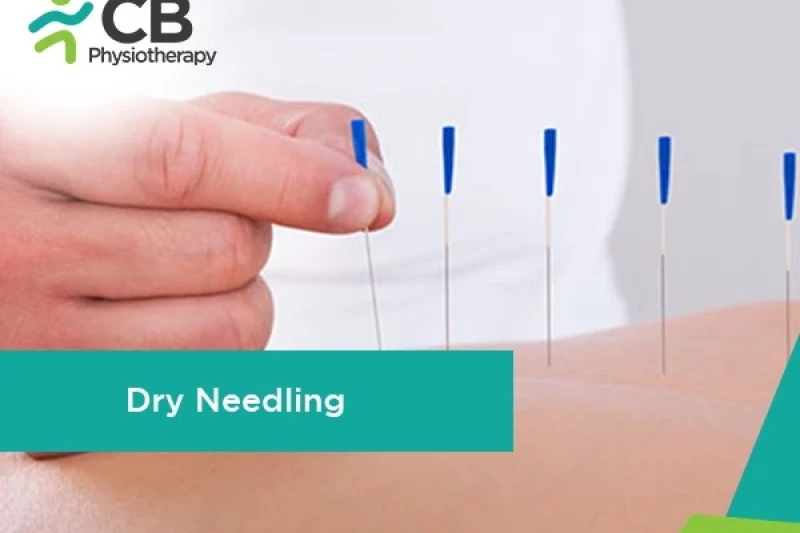
Dry Needling Therapy is also known as Trigger Point Dry Needling or Myofascial Trigger Point Dry Needling. It is a process in which thin needles are inserted into the trigger points or tight muscles of the body. It is usually done to treat myofascial pain (Myo means Muscle and Fascia means Tissue that connects muscles). The main purpose is to improve Tissue Healing and Restore Muscle Function. Muscles in our Body sometimes develop knotted areas called Trigger points which are quite sensitive and can be painful when touched. A physiotherapist pushes thin solid needles through the skin into trigger points. These Needles are used to stimulate the tissue and not to inject the medication.
The patient may experience different sensations, muscle soreness, aching, a muscle twitch, etc. when being needled which is considered to be a good sign. The needles may be placed deeply or superficially, for shorter or longer periods depending upon the type of pain being treated.
There are various DN techniques that therapists may use as a combination, during clinical practice. Equipment required includes needles, gloves, hand sanitizer, alcohol wipes, needle disposal box, cotton swabs for bleeds, and a waste disposal bag or can. General guidelines for the technique are as follows:
Single-use, sterile, suitable monofilament needles are employed. Needle length and thickness are chosen based on patient size, muscle to be needled, and expected depth of penetration. The size of the needles can vary from 0.5 inches to 2.5 inches from 0.16mm to 0.3mm in diameter depending on the depth of penetration. No of the needles inserted maybe 5- 10 needles. Dry needling is often described as a painless technique due to it’s blunt tip, even though it is very tiny. When choosing needle length, the therapist should bear in mind that needles should not be inserted into the handle.
A hygiene protocol is carried out and gloves are worn on at least the palpating hand or, if so preferred or required, on both hands.
The muscle being needled is identified and a flat or pincer grip technique is employed by the palpating hand.
The needle is inserted across the skin using the guide tube. The guide tube is then removed. The needle shaft should not be touched to prevent contamination.
For Superficial Dry Needling, the needle is inserted to the depth for superficial needling or to a depth to engage the TrPts in TrPts-DN.
TrPts-DN involves a relatively slow but deliberate steady lancing motion in and out of the muscle, which is considered a dynamic needling technique. The needle is brought out to the edge of the myofascial into the sub-dermal tissue and moved back into the muscle. The main aim of this treatment is to elicit LTRs.
The sharp pain of a stinging, burning or electrical nature should be immediately avoided as this may signal penetration of a nerve or blood vessel.
DN techniques such as SDN or TrPts-DN may involve static needle techniques, where the needle is left in the fascia for some time. In this case, the needle may be rotated to induce mechanical stress on the fascia or myofascial. When static needling is employed, the therapist should ensure the needle is safe at rest and not in the close vicinity of vulnerable anatomical structures. Patients should be informed to stay still and not to move. They should be able to alert the therapist as needed either vocally or by the use of a call bell.
It may be acceptable that an individual needle may be withdrawn and reinserted across the skin of the same patient at the same treatment session. Again, touching the needle shaft should be avoided to prevent contamination of the needle and if this occurs the needle should be disposed of and a new needle used. Needles may become blunt from piercing soft tissue and contacting bone and in this case, a new needle should be employed. Of course, a used needle should never be stored or reused.
The therapist should actively communicate with the patient during DN and limit treatment to the patient’s tolerance. The patient should be reassured throughout the procedure.
This is most important for the initial treatment for a new ‘needle naïve’ patient
DN technique should suit the tolerance and ability of the patient. Considerations for technique include SDN vs. TrPt’s-DN, the number of lancing motions, intensity and speed of the lancing motion, stimulation, and quantity of local twitch responses, the length of time of active needling, static needling technique, the number of needle insertions per muscle, and the number of muscles treated in one session, etc. The patient’s characteristics will determine much of the approach and the patient’s previous experience and the response should be taken into account. The patient’s perceived experience of medical treatment is related to the intensity of the pain and the pain experience within the last 3 minutes of the procedure, therefore the treatment session should not be terminated with painful procedures.
When needles are withdrawn, they should be immediately disposed of in a suitable certified ‘sharps container’.
Dry Needling is usually used as a part of an overall plan. It is used to increase the range of motion that may be restricted due to muscle tightness or scar tissue. It may also help to treat:
Select your City to find & connect with our experts regarding Physiotherapy for Dry Needling Therapy